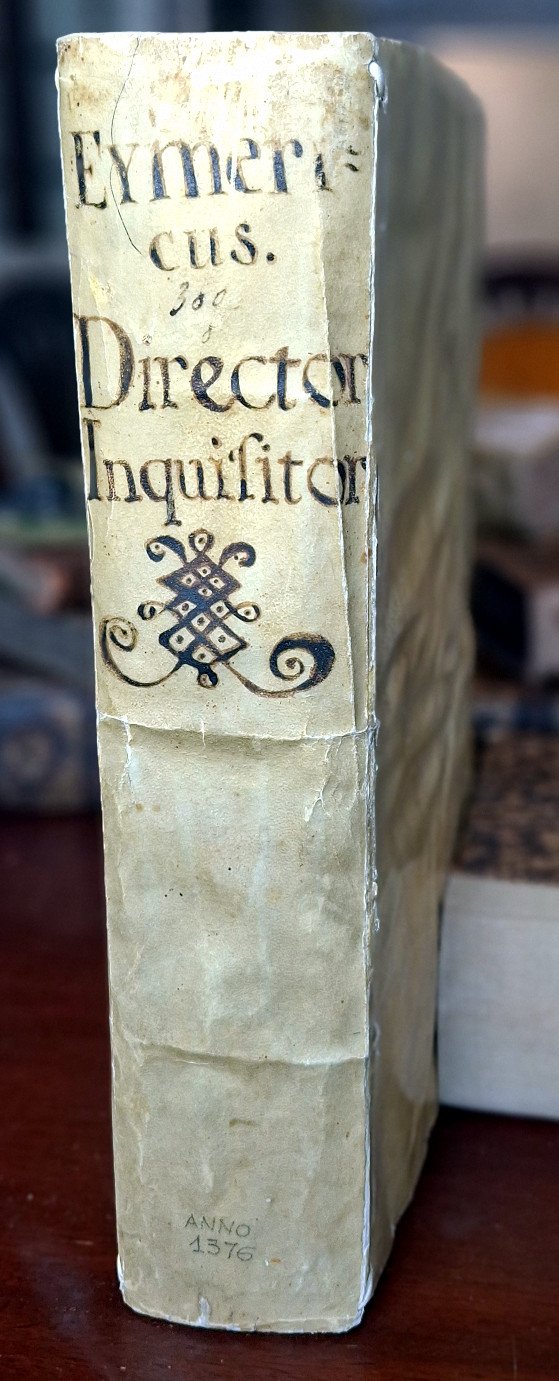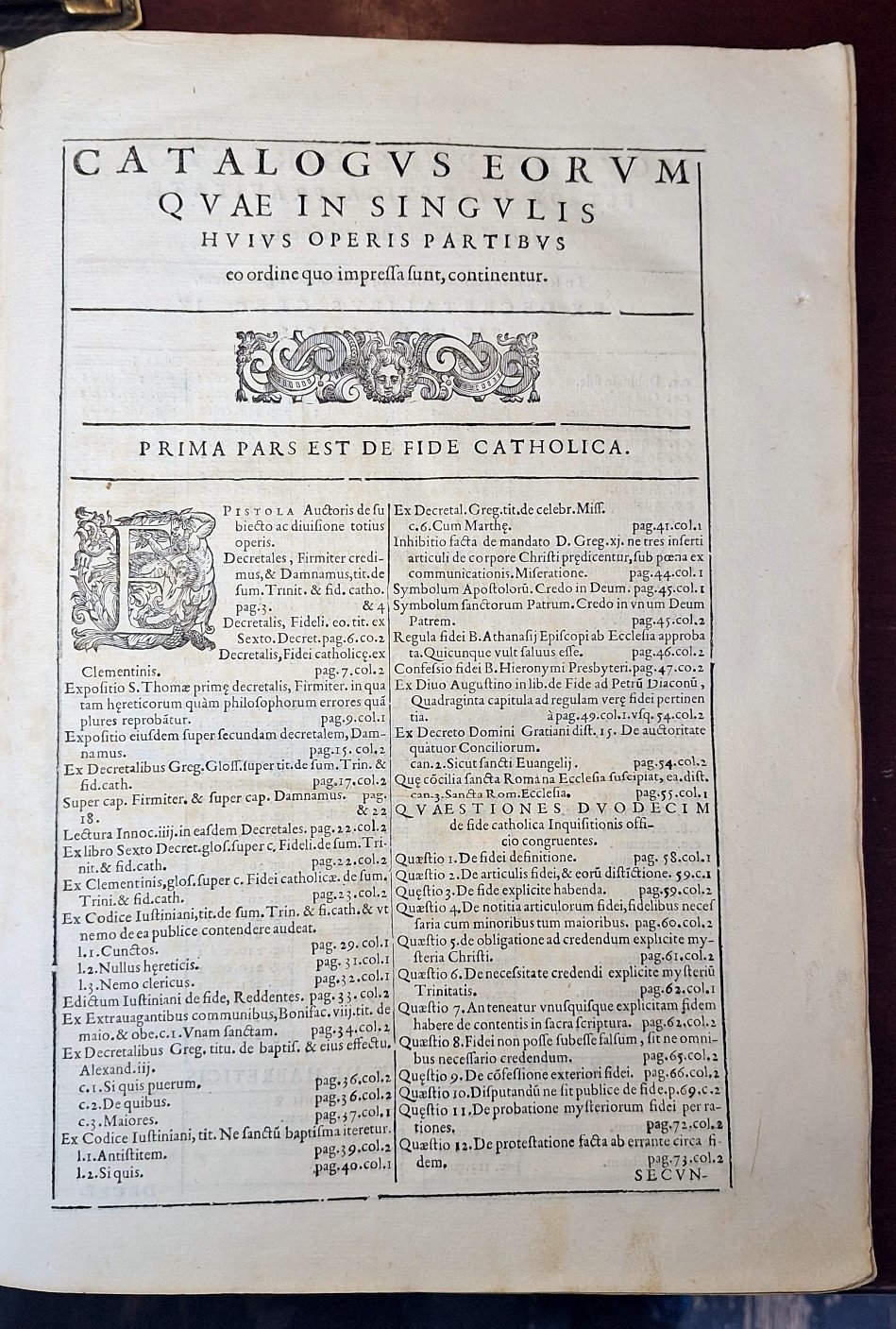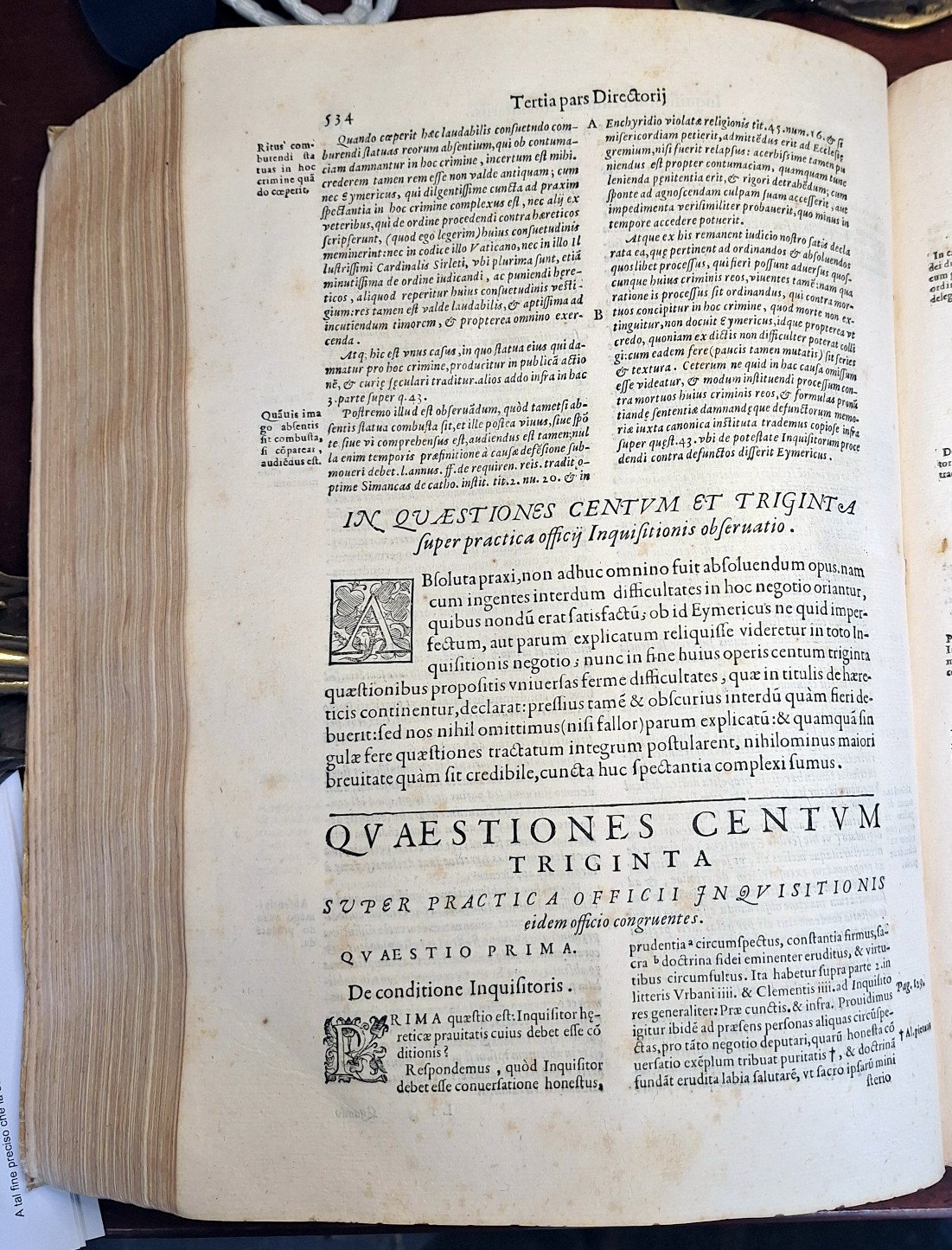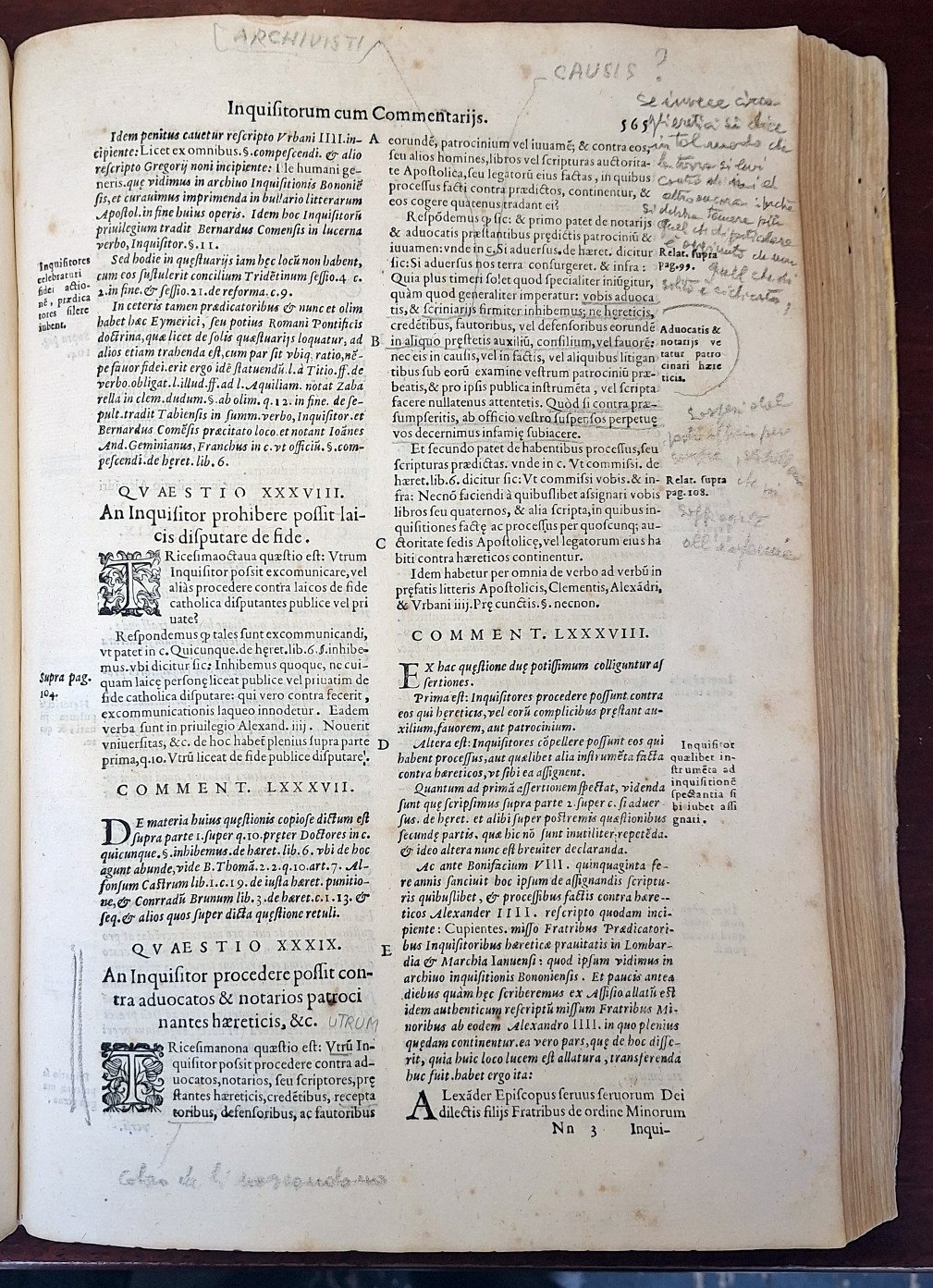 Image 1 of 5
Image 1 of 5

 Image 2 of 5
Image 2 of 5

 Image 3 of 5
Image 3 of 5

 Image 4 of 5
Image 4 of 5

 Image 5 of 5
Image 5 of 5






1587 - Magic Becomes Heresy, Directorium Inquisitorum, foundation of the Witch Trials
Crucial to the foundations of the Witch Trials is the transition of magic from mere sin to condemned heresy and that transition occurs in this rather dreadful volume, the Directorium Inquisitorum (1376) by the Catalan chief Inquisitor Nicholas Eymerich. The Directorium builds on the work of previous Inquisition manuals, especially Bernard Gui’s Inquisitio Hereticae Pravitatis, but greatly expands both the jurisdiction of the Inquisition but also deepens its theoretical foundations. Indeed, Eymerich’s text is structured as a kind of operational textbook for the Inquisition along with being an encyclopedia for the occult. Core to Eymerich’s logic for the condemnation of magic as heresy is how such a practice always includes some degree of worship and adoration of demons.
However, the text is far more sinister than it first appears. Eymerich allows for more aggressive interrogation, near deception to be used and much easier access to torture. André Morellet published excerpts of the Inquisitors’ manual in 1762. The men of the Enlightenment referred to the text as a “monument of atrocity and ridiculousness” and Voltaire realized that Candide should have gone on to kill many more than one Inquisitor. A few decades later Edgar Allen Poe would include the Directorium inquisitorum in his litany of shocking and horrible volumes pondered by those within the walls of the doomed House of Usher. Alongside the horrible Malleus Malefiarum, the work of the 14th century Catalan Inquisitor Nicholas Eymerich came to represent absolute horrors of human cruelty manifest by religious dogma run amok. Indeed, it took none less than Mein Kampf to steal this Satanic throne from Malleus and the Directorium of Eymerich.
While not a grimoire itself, this book offers a crucial look under the hood of the machine that sought to control forbidden knowledge. The legal authority meticulously analyzed by Peña, whose commentary is included, was precisely that invoked in papal bulls condemning witchcraft, alchemy, and other practices deemed occult or heretical. The application of papal letters provide a direct window into the legal framework underpinning the Inquisition's relentless pursuit of perceived occult threats and the Index's censorship of esoteric texts across Europe. Understanding Peña is understanding how the hammer of orthodoxy fell upon unsanctioned beliefs and practices.
While texts like Malleus Maleficarum are more well known, the Directorium Inquisitorum is the truly and horribly the foundation of the Witch Trials.
1587. Directorium inquisitorum. [With:] PENA, Francisco. [Extravagantes communes...]. Disputatio de auctoritate seu robore, probatione, & vtilitate extrauagantium, seu litterarum Apostolicarum. Romae [Rome]: In aedibus Populi Romani: apud Georgium Ferrarium. Folio (approx. 320 x 225 mm). [32], 687, [57], [8], 153, [7] pp. Woodcut arms of Pope Sixtus V on main title page (marginal defects). Numerous woodcut initials. Text in Latin, double columns. Contemporary full flexible vellum, handwritten spine title; binding detached. Text block sound, sporadic foxing.
Crucial to the foundations of the Witch Trials is the transition of magic from mere sin to condemned heresy and that transition occurs in this rather dreadful volume, the Directorium Inquisitorum (1376) by the Catalan chief Inquisitor Nicholas Eymerich. The Directorium builds on the work of previous Inquisition manuals, especially Bernard Gui’s Inquisitio Hereticae Pravitatis, but greatly expands both the jurisdiction of the Inquisition but also deepens its theoretical foundations. Indeed, Eymerich’s text is structured as a kind of operational textbook for the Inquisition along with being an encyclopedia for the occult. Core to Eymerich’s logic for the condemnation of magic as heresy is how such a practice always includes some degree of worship and adoration of demons.
However, the text is far more sinister than it first appears. Eymerich allows for more aggressive interrogation, near deception to be used and much easier access to torture. André Morellet published excerpts of the Inquisitors’ manual in 1762. The men of the Enlightenment referred to the text as a “monument of atrocity and ridiculousness” and Voltaire realized that Candide should have gone on to kill many more than one Inquisitor. A few decades later Edgar Allen Poe would include the Directorium inquisitorum in his litany of shocking and horrible volumes pondered by those within the walls of the doomed House of Usher. Alongside the horrible Malleus Malefiarum, the work of the 14th century Catalan Inquisitor Nicholas Eymerich came to represent absolute horrors of human cruelty manifest by religious dogma run amok. Indeed, it took none less than Mein Kampf to steal this Satanic throne from Malleus and the Directorium of Eymerich.
While not a grimoire itself, this book offers a crucial look under the hood of the machine that sought to control forbidden knowledge. The legal authority meticulously analyzed by Peña, whose commentary is included, was precisely that invoked in papal bulls condemning witchcraft, alchemy, and other practices deemed occult or heretical. The application of papal letters provide a direct window into the legal framework underpinning the Inquisition's relentless pursuit of perceived occult threats and the Index's censorship of esoteric texts across Europe. Understanding Peña is understanding how the hammer of orthodoxy fell upon unsanctioned beliefs and practices.
While texts like Malleus Maleficarum are more well known, the Directorium Inquisitorum is the truly and horribly the foundation of the Witch Trials.
1587. Directorium inquisitorum. [With:] PENA, Francisco. [Extravagantes communes...]. Disputatio de auctoritate seu robore, probatione, & vtilitate extrauagantium, seu litterarum Apostolicarum. Romae [Rome]: In aedibus Populi Romani: apud Georgium Ferrarium. Folio (approx. 320 x 225 mm). [32], 687, [57], [8], 153, [7] pp. Woodcut arms of Pope Sixtus V on main title page (marginal defects). Numerous woodcut initials. Text in Latin, double columns. Contemporary full flexible vellum, handwritten spine title; binding detached. Text block sound, sporadic foxing.
